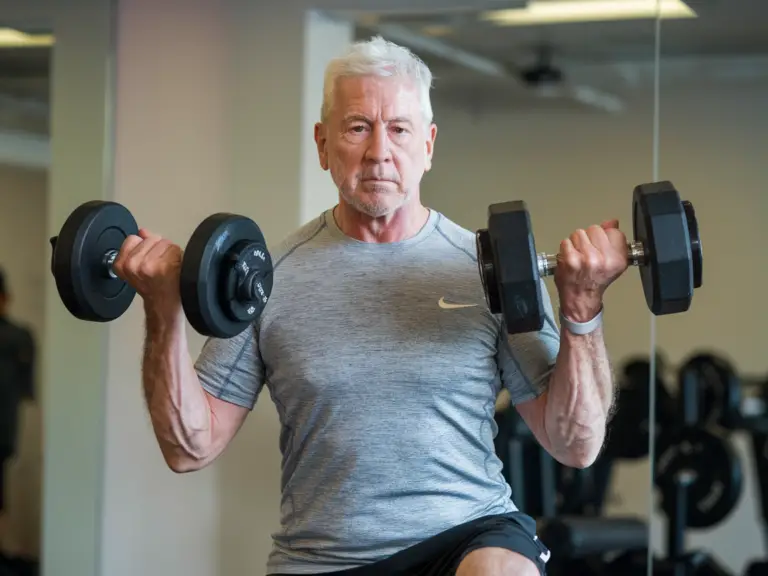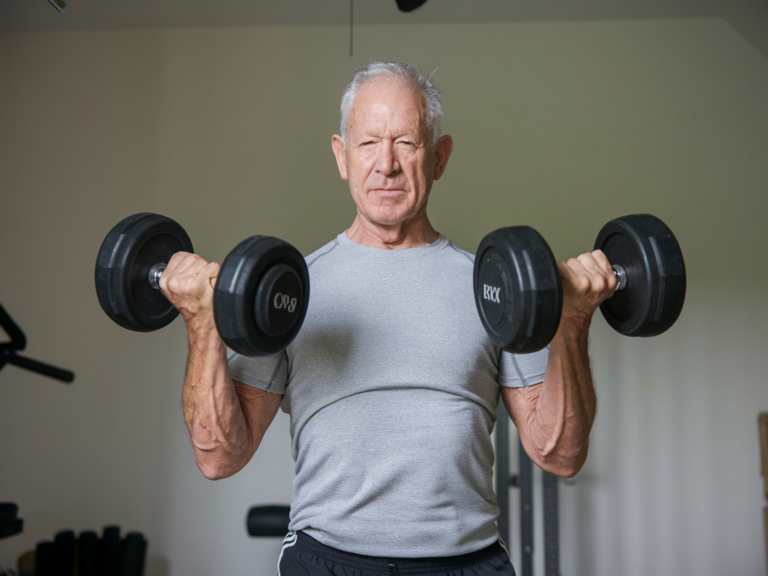How I Discovered the Perfect Low-Impact Cardio Routine at 50+ (And Why My Joints Thank Me)
It was during my usual Saturday morning run when everything changed. There I was, pushing through my regular route around the neighborhood, when that familiar sharp pain in my knees stopped me in my tracks. After decades of enjoying high-impact cardio, my body was sending me an urgent message that I couldn’t ignore. If you’re finding yourself nodding along, wondering how to maintain your fitness without punishing your joints, I’ve been exactly where you are.
After 25 years of relying on running as my go-to cardio workout, I spent the next two years discovering and fine-tuning what I now know to be the most effective low-impact cardio routines for men over 50. The journey wasn’t always smooth, but what I discovered changed everything about how I approach fitness.
Today, I’m excited to share the natural solutions that helped me maintain my cardiovascular fitness without the joint strain. Trust me, you don’t have to give up on staying fit – you just need to work smarter, not harder.
Understanding Your Body’s New Needs
The moment I decided to learn about heart rate zones was eye-opening. Like many of us who’ve been active all our lives, I used to push myself to the limit in every workout. But here’s something interesting I discovered: our bodies process exercise differently after 50, and understanding these changes made all the difference in my fitness journey.
My Heart Rate Reality Check
Remember when you could just jump into any workout without a second thought? That was me too. But after struggling with recovery and constant fatigue, I learned about the importance of heart rate zones the hard way. Using a simple heart rate monitor, I discovered I was consistently pushing myself too hard, even during what I thought were “easy” workouts.
What really surprised me was finding my sweet spot for low-impact cardio. Instead of aiming for the highest possible heart rate, I found that maintaining a moderate zone (about 120-140 beats per minute for me) actually improved my endurance and energy levels. I noticed, and research backs this up, that this moderate-intensity zone is perfect for building cardiovascular fitness while protecting our joints.
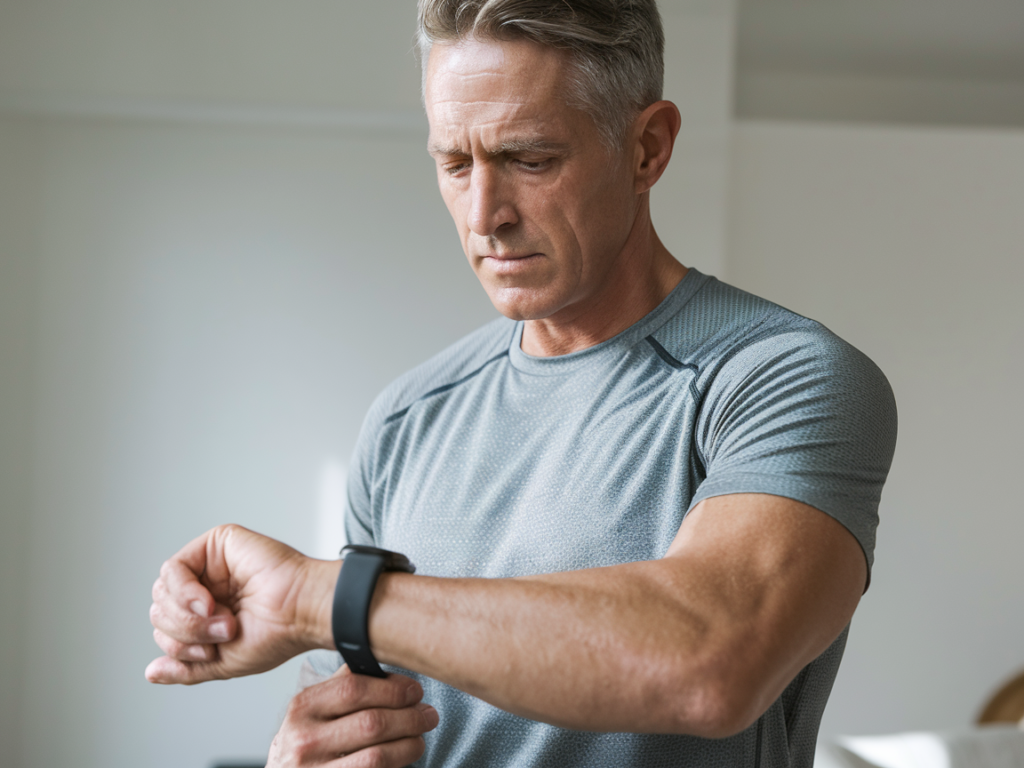
The Joint-Friendly Revolution
The day I switched to low-impact exercises, everything changed. Those nagging knee pains that used to wake me up at night? They started fading. My morning stiffness? Significantly reduced. But here’s what really caught me off guard – I was getting the same cardiovascular benefits as my previous high-impact routines, sometimes even better.
I’ve found that the key to successful low-impact cardio exercises for older men isn’t about working less – it’s about working differently. Through trial and error, I discovered that activities like swimming and cycling could get my heart pumping just as effectively as running ever did, but without the jarring impact on my joints.
Some days, my joints still feel a bit stiff, but the difference is night and day compared to my running days. The best part? I’m maintaining my fitness levels while actually enjoying my workouts again. No more dreading that post-exercise pain or worried about long-term damage to my joints.
ALSO READ: The Ultimate Men’s Guide to Strength Training Over 50: What Actually Works
III. My Five Favorite Low-Impact Cardio Solutions
Let me tell you something that shocked me – discovering that I could get an amazing cardio workout without a single running step. After months of experimenting with different low-impact cardio exercises, I found five approaches that completely transformed my fitness routine. Here’s what worked for me, and why I think they might be perfect for you too.
Swimming: My Thursday Morning Game-Changer
The first time I jumped into the pool for a workout, I felt completely out of my element. Years of running hadn’t prepared me for this! But three months in, something clicked. What started as awkward laps turned into my most anticipated workout of the week.
I started with just 15 minutes of gentle swimming, alternating between freestyle and breaststroke. What really surprised me was how quickly my endurance improved. These days, my Thursday morning routine includes 30 minutes of interval swimming: two laps at a moderate pace, followed by one lap of faster swimming. The water’s natural resistance provides an incredible workout while being incredibly gentle on my joints.
Here’s what I wish I’d known when starting: focus on form over speed. I spent time working with the local pool’s senior swim coach, and those few sessions made all the difference. Now I get a better workout with less effort simply because I learned to move through the water more efficiently.
Walking with Purpose
Walking might sound too simple to be effective, but trust me – there’s walking, and then there’s walking with purpose. I discovered that by making a few key adjustments to my walking routine, I could turn it into a serious cardio workout that my body actually craved.
My breakthrough came when I started incorporating interval walking. Instead of just strolling at one pace, I now alternate between three minutes of brisk walking and one minute of faster-paced walking. I found that using walking poles not only helped with stability but also engaged my upper body, turning a simple walk into a full-body workout.
The game-changer was tracking my heart rate during these walks. I was amazed to see that my purposeful walking routine kept my heart rate in the perfect zone for fat burning and cardiovascular health, all without a single moment of joint pain.
Cycling Adventures
Remember that old bike gathering dust in your garage? That was me two years ago. Now, it’s become my favorite way to explore our local trails while getting an incredible workout. The transition from high-impact running to cycling wasn’t just easy on my joints – it opened up a whole new world of fitness possibilities.
I started with 20-minute rides on flat terrain, using a stationary bike on rainy days. Gradually, I worked up to 45-minute sessions, mixing in gentle hills and varying my pace. What worked best for me was finding a cadence that felt natural – around 70-80 rotations per minute – and focusing on smooth, consistent pedaling rather than pushing too hard.
One of my favorite discoveries was joining a local senior cycling group. We meet twice a week for morning rides, combining exercise with social interaction. It’s amazing how much farther you can go when you’re enjoying good conversation along the way.
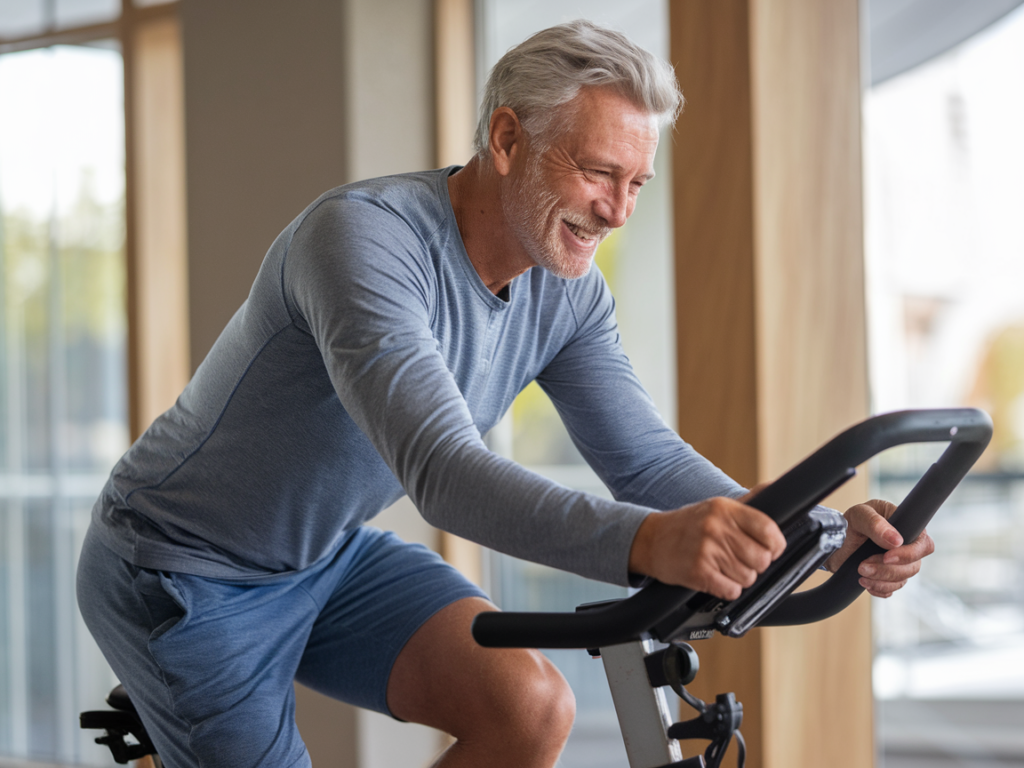
IV. Creating Your Weekly Rhythm
After discovering these different cardio options, the next challenge was figuring out how to put them all together. Through plenty of trial and error, I developed a weekly routine that keeps me energized without overwhelming my body.
My Balanced Week
Here’s what finally worked for me: I spread different activities throughout the week, giving my body time to recover between similar movements. Mondays and Thursdays are for swimming, Tuesdays and Saturdays for cycling, and Wednesdays and Fridays for purposeful walking. Sundays? That’s my active recovery day – usually a gentle walk with my wife.
The key was learning to listen to my body’s signals. Some weeks, I might feel energetic and able to do more. Other weeks, especially during changes in weather, I might need to dial things back. This flexibility has been crucial for maintaining consistency without risking burnout or injury.
Progressive Success
When I first started this new approach to cardio, I was tempted to do too much too soon. But I learned that slow and steady really does win the race. I started with just 20 minutes per session, three times a week. Each month, I added either five minutes to my sessions or one new session to my week, but never both at the same time.
You know what made the biggest difference? Keeping a simple journal of how I felt after each workout. Not just tracking distance or time, but noting my energy levels, any discomfort, and how well I slept that night. This helped me identify patterns and adjust my routine for optimal results.
V. Protecting Your Body
Looking back, I realize one of my biggest mistakes in my younger years was skipping proper warm-ups and cool-downs. Now, I know better. Let me share the pre and post-workout routines that have made all the difference in keeping me active and pain-free with my low-impact cardio exercises.
My Pre-Workout Ritual
The morning I discovered the power of a proper warm-up routine was a game-changer. Instead of jumping straight into my workout like I used to, I now spend 10 minutes preparing my body. It’s become almost meditative, and I’ve found it makes every workout more effective.
My routine starts with gentle shoulder rolls and arm circles, moving down to hip rotations and ankle movements. What really surprised me was how this simple sequence not only prevented pain but actually improved my workout performance. I’ve noticed, and research backs this up, that taking these few extra minutes helps my body transition smoothly into exercise mode.
Here’s what I wish I’d known years ago: dynamic stretching before cardio is like warming up your car on a cold morning – it just works better. I focus on movements that mirror what I’ll be doing in my workout. Before swimming, for example, I do gentle arm rotations and leg swings. Before cycling, I pay extra attention to my hips and knees.
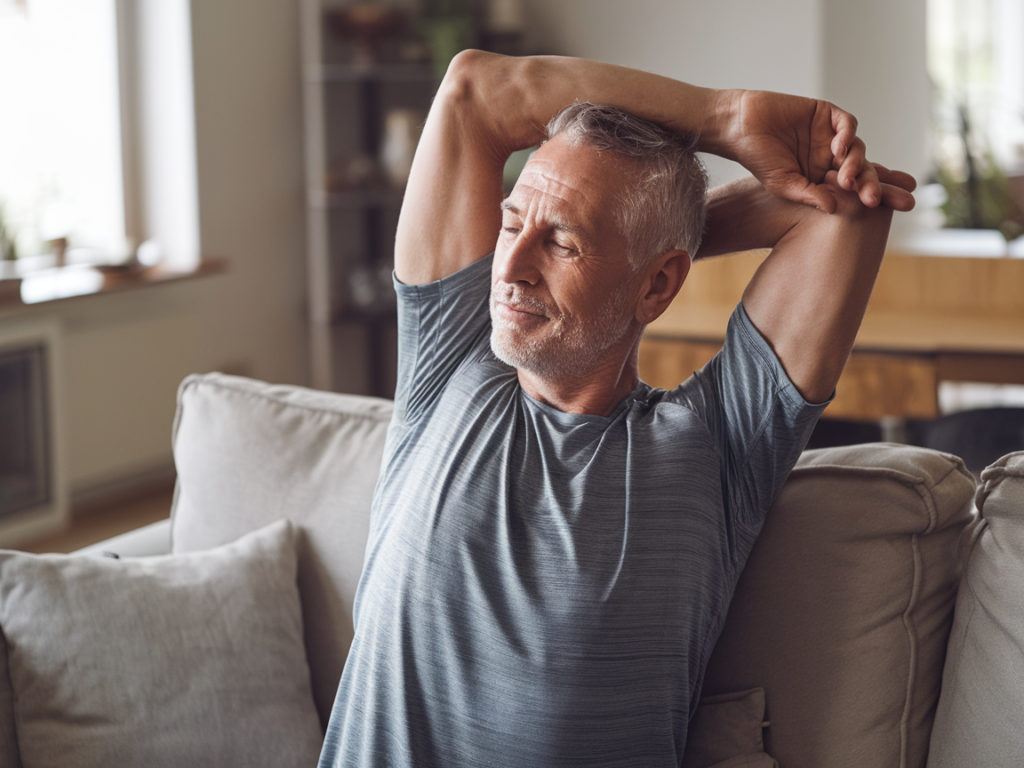
Post-Workout Care
Remember that satisfying tiredness after a good workout? Well, I’ve learned that what we do in those first 15 minutes after exercise can make or break how we feel the next day. My post-workout routine has evolved through plenty of trial and error, and now it’s as essential as the workout itself.
I start with 5 minutes of gentle walking or moving, letting my heart rate gradually return to normal. Then comes my favorite part – gentle stretching focusing on the major muscle groups I’ve used. The key discovery was holding each stretch for 30 seconds while taking deep, relaxing breaths. No bouncing, no forcing – just gentle, sustained stretches.
What really made a difference was adding self-massage with a foam roller to my cool-down routine. Those first few sessions were interesting (and a bit uncomfortable!), but now it’s become an essential part of my recovery process. I focus especially on my legs and back, spending about 5 minutes total on problem areas.
ALSO READ: How Can You Enhance Body Density as a Man Over 60?
VI. Tracking Your Journey
When I first started this low-impact cardio journey, I was skeptical about tracking everything. But looking back at my progress has become one of my favorite parts of this fitness adventure. Let me share the simple but effective ways I’ve found to monitor progress without getting overwhelmed by numbers.
Simple Monitoring Methods
The breakthrough came when I stopped obsessing over traditional metrics like speed and distance. Instead, I started focusing on how I felt during and after workouts. Using a basic heart rate monitor (nothing fancy, just a simple chest strap), I learned to stay in my optimal zones for different activities.
I created a simple system in my phone’s notes app: after each workout, I log three things – my average heart rate, my energy level (on a scale of 1-5), and any notable observations. This quick check-in takes less than a minute but has given me incredible insights into what works best for my body.
Celebration Points
Here’s something interesting I’ve learned about tracking progress after 50 – it’s not always about the numbers. Some of my biggest victories have been things you can’t measure: walking up stairs without getting winded, playing with my grandkids without feeling tired, or waking up without stiffness.
I set monthly check-in dates with myself, usually on the first Sunday of each month. During these reviews, I look for patterns in my energy levels, sleep quality, and overall well-being. The improvements I’ve seen in these areas have been far more motivating than any number on a fitness tracker.
VII. Your Next Steps
After sharing my entire journey with low-impact cardio, I want to leave you with some practical steps to get started. Remember when I felt overwhelmed at the beginning? Let me help you avoid that feeling with a simple approach that worked for me.
Getting Started
The first week is crucial, and I’ve found that starting small leads to lasting success. Choose just one activity from the options we’ve discussed – I recommend walking with purpose since it requires minimal equipment and you can start right from your doorstep. Commit to three 20-minute sessions in your first week, focusing on maintaining a comfortable pace where you can still hold a conversation.
Your only essential equipment for now? A good pair of supportive shoes and comfortable clothes. I’d suggest holding off on buying any expensive gear until you’ve established your routine. Though I will say, investing in a basic heart rate monitor after your first month can be incredibly helpful for tracking your progress.
Remember this: every step forward, no matter how small, is progress. It took me time to build my current routine, and giving yourself that same grace will make all the difference in creating a sustainable fitness journey.
Frequently Asked Questions
What is the ideal heart rate for low-impact cardio workouts after 50?
Based on my experience and consultation with fitness coaches, aim for 50-70% of your maximum heart rate (220 minus your age). At this level, you should be able to hold a conversation while exercising, though with some effort. I’ve found this range provides the best balance of cardiovascular benefits while protecting your joints.
How long should my low-impact cardio workouts be to see results?
Start with 20 minutes of exercise three times a week. I began this way and gradually built up to 45-minute sessions. In my experience, consistency matters more than duration – regular shorter workouts are better than sporadic long ones. You’ll be surprised how quickly your endurance builds with this approach.
Can I start low-impact cardio if I already have joint pain?
Absolutely! I started my low-impact journey because of knee pain. Begin with water exercises or recumbent cycling, as these put minimal stress on your joints. Listen to your body – some muscle soreness is normal, but sharp joint pain means you need to modify your activity or try something gentler.
How can I combine low-impact cardio with other exercises?
I’ve found the best approach is alternating between cardio and gentle strength training days. Try three days of low-impact cardio with two days of light resistance training using bands or bodyweight exercises. This combination has helped me maintain both heart health and muscle strength while preventing burnout.


